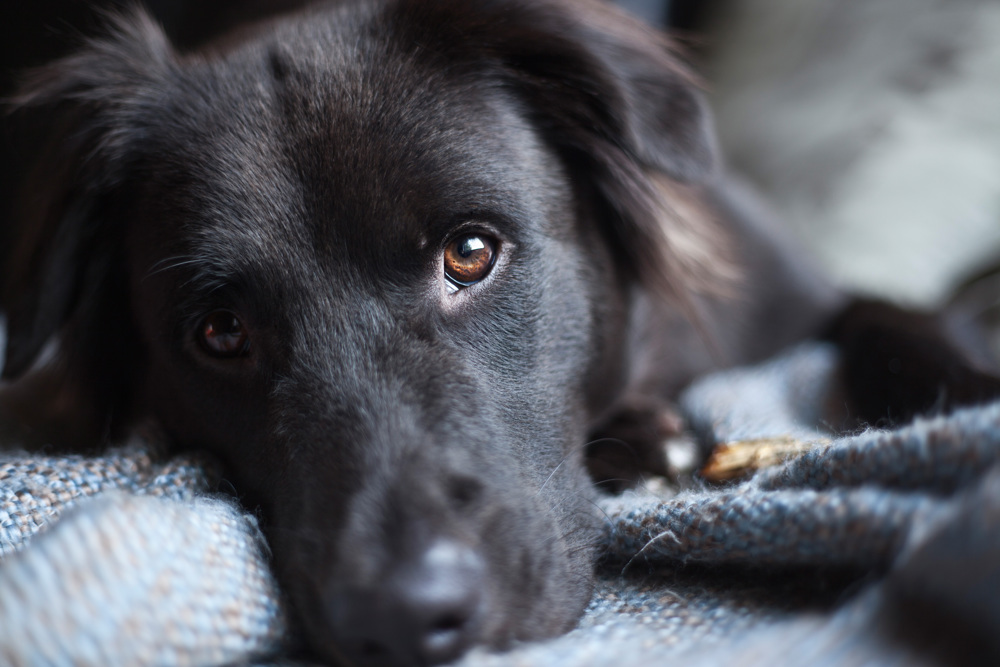
Is chocolate toxic to dogs?
Why is chocolate poisonous to dogs?
How much chocolate is dangerous?
- How big your dog is (typically, bigger dogs can tolerate more chocolate than smaller dogs)
- How much theobromine they’ve eaten
Darker and more expensive chocolates usually have more theobromine and are more likely to be harmful to dogs.
Theobromine content vs types of chocolate
- Plain or dark chocolate tends to be rich in theobromine and is likely to be more toxic than most other types of chocolate
- Milk chocolate is usually lower in theobromine than dark chocolate but may still have enough to be dangerous to some dogs. Milk chocolate is higher in fats and sugars and so may be very tempting for dogs to eat lots of
- White chocolate contains little theobromine and is unlikely to cause chocolate poisoning. It is, however, very fatty and can cause painful and potentially life-threatening problems with a dog's pancreas, known as pancreatitis
- Drinking chocolate is usually relatively low in theobromine, but the theobromine content may vary depending on the brand
- Cocoa powder is high in theobromine and can have an even higher theobromine content than dark chocolate
- Cocoa shell mulch is used by some gardeners on flower beds and is very high in theobromine. We don't recommend dog owners using cocoa mulch in their garden
What are the symptoms of chocolate poisoning?
Theobromine is a stimulant, so it can cause your dog to become excitable or develop muscle twitching, tremors, fitting or they may have a high heart rate.
Other signs can include drinking a lot, dribbling, not walking in a straight line and fast breathing. If enough chocolate is eaten then the effects can be severe or even fatal.
Did you know that dogs don’t have ‘symptoms’?
How long does it take for a dog to show symptoms of chocolate poisoning?
How long does it take to recover from chocolate poisoning?
How long a dog is ill for depends on how much chocolate they’ve eaten, how unwell they’ve been and what treatment the vet has used, but effects usually last for around three days.
What are the long-term effects of chocolate poisoning?
Long-term effects are unlikely to occur and most dogs make a full recovery after becoming unwell from eating chocolate. In extremely rare instances, dogs may develop long-term secondary effects from serious complications, such as brain damage caused by prolonged seizures.
What should I do If my dog ate chocolate?
If your dog is already very unwell then you may need to take them to the vets straight away. If possible, try to get someone to call ahead to alert your veterinary practice that you’re on your way so that they can be prepared.
Do not try to make your dog sick yourself as this can sometimes make the situation worse.
Sugar-free chocolate – A double danger
Some sugar-free chocolates contain xylitol, which is an artificial sweetener that is especially poisonous to dogs. Xylitol can cause an otherwise healthy dog's blood sugar level to drop to dangerous levels and can also cause liver failure. If your dog eats an sugar-free chocolates then you should contact your vet for advice.
How can I stop my dog eating chocolate?
- Keep any chocolate out of paws reach at all times
- Dogs have an amazing sense of smell and some are very determined, so you may need to keep it somewhere that you know they definitely can’t reach
- When eating chocolate, make sure your dog can't get to it and don't be tempted to feed them any, no matter how lovingly they look at you
The dangers of chocolate at Easter and Christmas
Christmas
At Christmas, dogs are four times more likely to be taken to the vets with chocolate poisoning than at any other time of the year. Over the festive period there’s often an abundance of chocolate, so remember to keep chocolate advent calendars up high and don’t add chocolate coins or decorations to your Christmas tree. If you know there are any wrapped chocolate boxes, try to keep these separate from the other gifts that might go under your Christmas tree. Just because it’s wrapped, doesn't mean that your dog can’t smell that it’s there.Find out about other dangers at Christmas.
Easter
At Easter, remember to keep all chocolate Easter eggs safely away from your dog. If you’re doing an Easter egg hunt then remember to keep your dog away and always check that all chocolate eggs have been found afterwards.Find out about other dangers at Easter.
Beware sweet wrappers
Think your dog may be affected?
If you're worried about your dog's health, always contact your vet immediately!
We are not a veterinary organisation and so we can't give veterinary advice, but if you're worried about any of the issues raised in this article, please contact your local vet practice for further information
Find a vet near you
If you're looking for a vet practice near you, why not visit the Royal College of Veterinary Surgeons' Find a vet page.
